One of the most exciting aspects of being a marketer is learning from the greater community. We recently had the incredible opportunity of attending the SEMrush Marketing Show in Bangalore, where industry leaders presented on the latest trends in growth strategies, SEO, and online ads.
Now we’re ready to share some of the best marketing insights we learned with you.
The State of Content Marketing in 2020
Olga Andrienko, Head of Global Marketing, SEMrush
Olga Andrienko kicked off the event by teaching a packed house how to create successful content for a modern audience.
Her best practices include creating content that appeals to both readers and search engines, optimizing for voice search, featured snippet rankings, tone of voice, and writing an effective CTA. 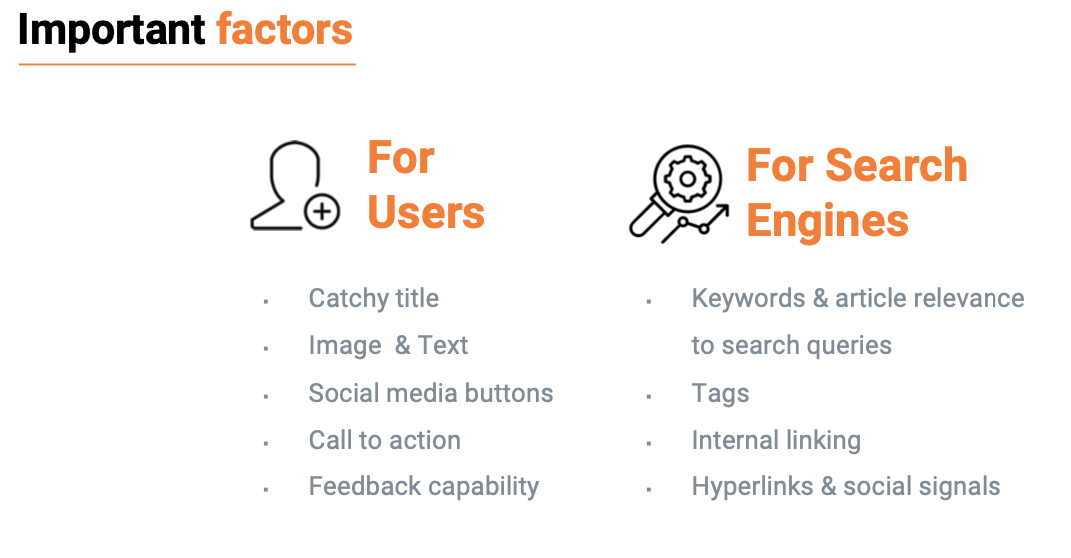
Image: SEMrush
Key Takeaways
- Consumers are driving the conversation, and they want to make educated choices without intrusive ads.
- Always consider distribution channel first before creating the content. For example, blog posts must prioritize SERP rankings and SEO keywords.
- Create content with both users and search engines in mind.
- The current content sweet spot: 800 words, 3 minute reading time, and a reading level that’s above plain language.
- Initially, focus on low hanging fruits such as long tail keywords.
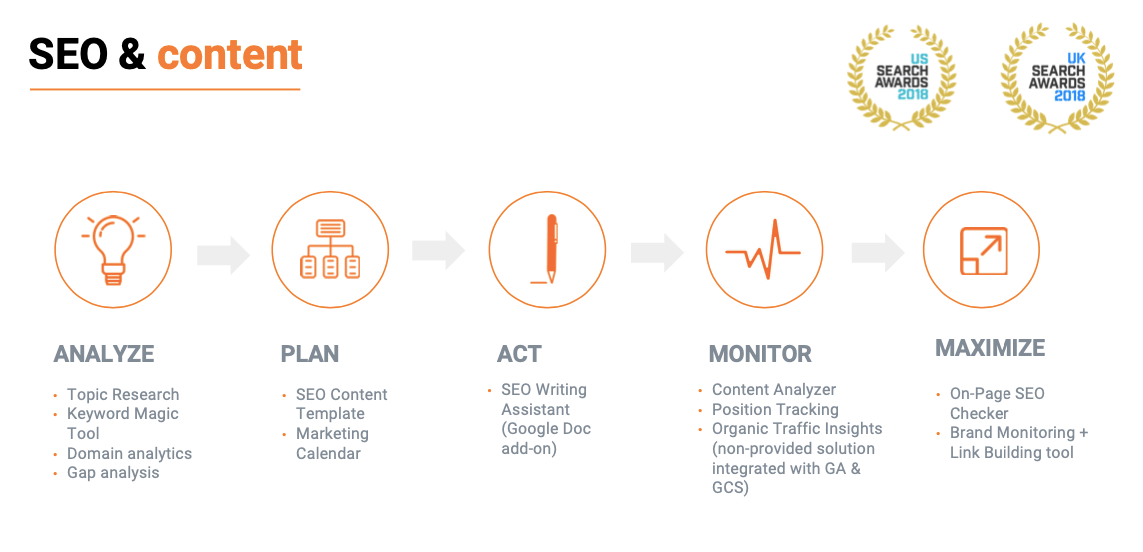
Image: SEMrush
Olga also addressed the importance of user generated content for SEO growth: if you can’t rank, find websites that allow UGC (User-generated content) and submit articles and videos to take advantage of their rankings and push your content to audiences.
How to Optimize Content for Voice Search & Virtual Assistants
Benu Aggarwal, Founder and President, Milestone Inc.
Voice Search is already impacting digital marketing efforts and content creation, as Benu Aggarwal of Milestone Inc. explained in her session.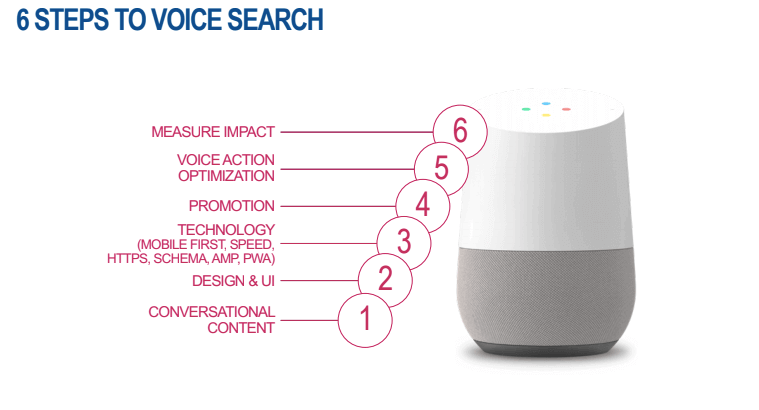
Image: SEMrush
Key Takeaways
- By 2020, 30% of all searches will be done using a device without a screen. To be successful with voice search, marketers should focus on long tail keywords, structured data, and semantic search.
- Content creators need to prioritize voice search and should answer these key questions: “I want to go…”, “I want to know…”, and “I want to do…”.
- BERT, a pre-trained natural language processing model making waves in the SEO industry, understands the nuances and context in searches and then displays results which are most relevant. Lately, a lot of hype is revolving around this latest Google Algorithm update and there are very few answers as to how marketers can optimize for it. The strategy that marketers can keep focusing on is creating higher quality content consistently and not falling for quick hacks to “rank faster”.
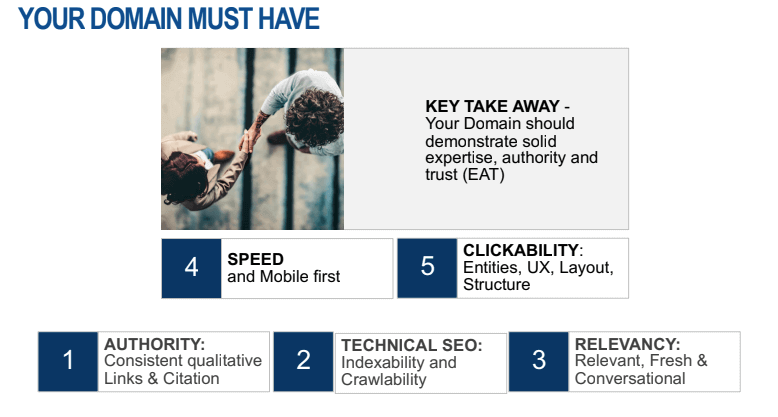
Image: SEMrush
Agile Marketing for SEO
Luis Rodriguez, Web and SEO Lead LATAM, UberEats
Luis Rodriguez from UberEats talked about the Agile Marketing process and how it now plays a significant role in the SEO industry. 
Image: SEMrush
Key Takeaways
- There are 3 key Agile Marketing principles that are essential for SEO: generating a remarkable experience, focusing on data verification instead of conversion, and constant small tests over large projects.
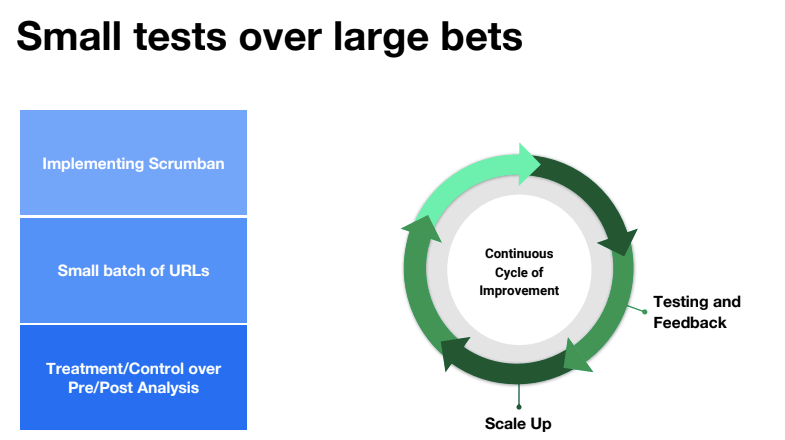
Image: SEMrush
- Under Agile Marketing method, all teams work collectively on high value projects.
- An Agile Marketing mindset focuses on improving the team’s speed, predictability, transparency, and adaptability so that teams can experiment, iterate, and learn quickly.
- To achieve efficient SEO results, Scrumban, a blend of Scrum and Kanban is ideal for marketers. This approach allows teams to accommodate unpredictable scenarios, without disrupting the continuous flow of work attached to longer timelines.
Conscious, Focused and Impactful SEO Strategies
Charmis Pala, Global SEO Head, Cleartrip
Charmis Pala of Cleartrip presented his take on automated techniques and technical optimization in SEO. 
Image: SEMrush
Key Takeaways
- Focusing on more keywords is not always the best way to improve rankings. Instead, target a few relevant keywords that will drive high converting traffic.
- Apart from tracking traffic and rankings, marketers need to keep optimizing the website performance. This can be achieved by treating SEO not solely as a marketing function. By applying agile practices, marketers along with the technical team should focus on preventing bot attacks, solving indexing errors, and other pressing tech issues that might be hampering website performance.
- Users need to track keywords and try to understand which keyword is working more based on the competitor results for that keyword and consistently track them.
Win Your SEO Battle: Become a Bahubali of Modern Organic Marketing
Lukasz Zelezny, SEO Expert
Lukasz Zelezny, a leading SEO expert, explained how marketers can generate large amounts of organic traffic.
Key Takeaways
- To refurbish content inventory, conduct gap analysis to identify the keywords and topics you’re missing out on that the competitors are already leveraging. Write on topics that prospects and customers are searching for at every stage of their journey.
- Use “Google Search Console” to perform a Snapshot Analysis. Pull a report of all the search queries for a given period and analyze data points like Impressions, Clicks, and CTR. Sort by landing page and then number of impressions. This will help you find out the “How to” keywords and other relevant search terms that you can target.
- To make your keywords stand out from a clutter of competitor keywords, use more long tail keywords. This will help you attract high-intent traffic and drive conversions.
Quora for Business
Gautam Shewakramani, International Growth Advisor, Quora
Quora’s knowledge sharing platform has been an effective channel for digital marketers to drive website traffic without spending a lot of money. But to be successful with the platform, marketers have to treat it as a hybrid of social and search. 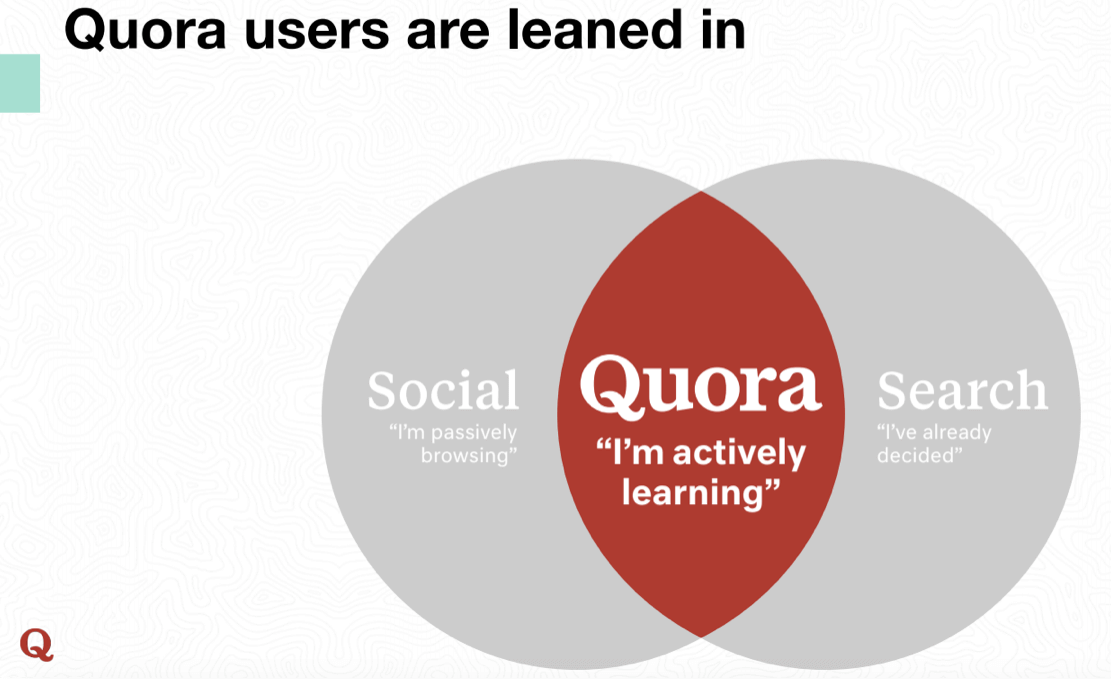
Image: SEMrush
Key Takeaways
- Quora users are in the “Actively Learning” stage. Marketers must engage with them by providing relevant, educational information and actionable solutions.
- Users spend more than 40 minutes daily on the app. This means they are less distracted and you can further engage with them by showing relevant answers and ads specific to their interests and topics.

Image: SEMrush
- For Paid Ads, use “Contextual Targeting” to narrow down your audience and get higher quality conversions. Use “Promoted Answers” to reach users who have previously read relevant questions and boost traffic.
ROAS (Return On Advertising Spend): The Secret KPI to Drive Customer Lifetime Value
Almitra Karnik, Head of Marketing, CleverTap
Digital marketers have traditionally looked at ROI as a metric to measure the campaign performance. But, Almitra Karnik, our Head of Marketing here at CleverTap, argues for another metric: Return on Advertising Spend (ROAS). This approach helps you measure the effectiveness of a specific campaign, ad group, ad, or even a keyword.
Apart from consistently optimizing your campaigns to improve ROAS, you need to first ensure you have got the prerequisites right. Here are a few.
- Build out a scalable MarTech stack and understand what influences the health of your business
- Create real-time dashboards to measure performance and tweak campaigns on the fly
- Run A/B tests and implement other CRO activities at scale
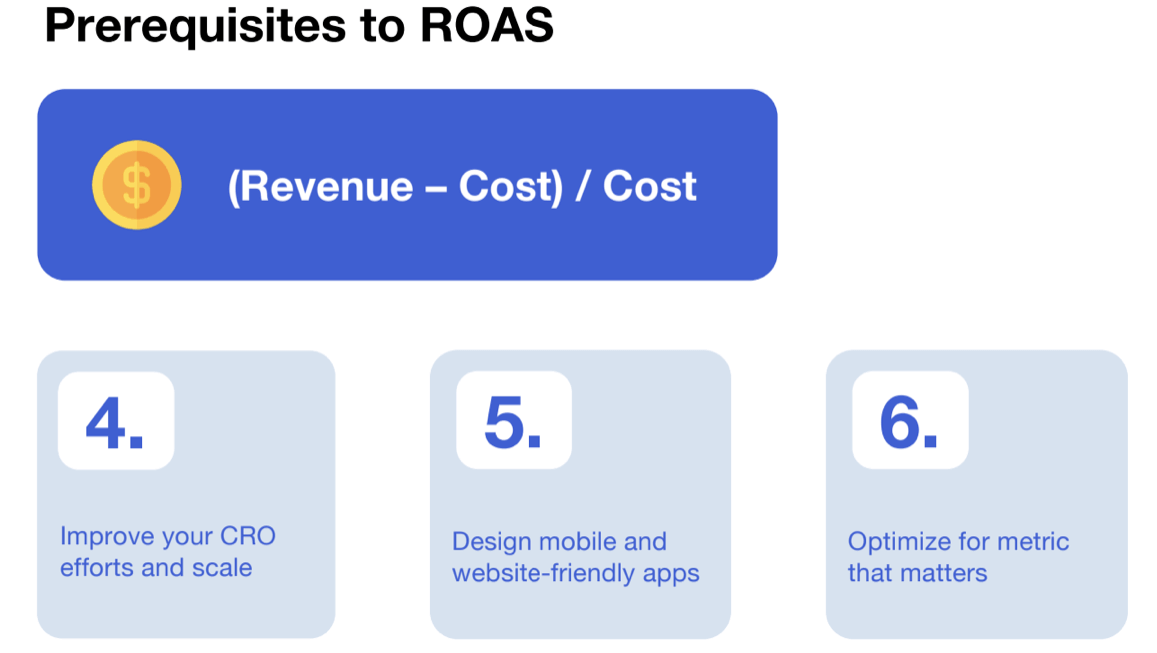
Image: SEMrush
We improve our conversion rates by running A/B tests to identify what type of content and design resonates.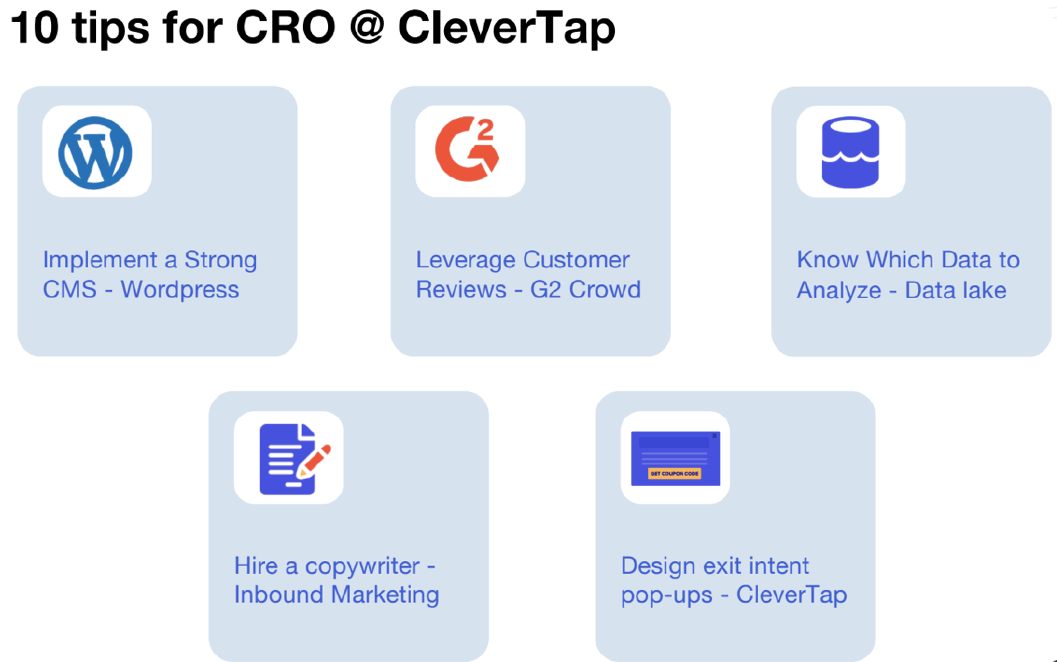
Image: SEMrush
To The Future of Cutting-Edge Content & SEO
The event brought together some of the best marketing minds to deliver sessions that were not only informative, but also enabled the attendees to discuss, brainstorm, and rethink their digital marketing strategies.
Thanks to SEMrush for hosting a great conference, and to our fellow attendees for making it such an enjoyable event!
Apoorv Bhatnagar 
Apoorv, Sr. Digital Marketing Manager at CleverTap, drives digital marketing strategies. Expert in SEO, analytics, and channel marketing. Previous roles at Freshworks, excelling in organic SEO, lead generation, and CMS activities.
Free Customer Engagement Guides
Join our newsletter for actionable tips and proven strategies to grow your business and engage your customers.















































